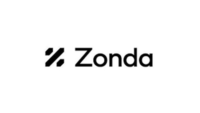On Nov. 22, the experts at Zonda released the New Home Market Update report for October 2022.
Uncertainty is everywhere you look in today’s economy. Unfortunately, uncertainty does not mix well with making the largest purchase of one’s life, which is reflected in the data. Zonda’s newly released national new home sales figures captured 467,082 homes sold in October on a seasonally adjusted annual rate, down 34.1 percent compared to last year.
However, builders are in the business of selling homes, so we are seeing an increase of using both price cuts and incentives to help get buyers off the sidelines. Mortgage rate incentives are proving to be the most effective as they solve one of the biggest issues today: the 70+ percent increase in the monthly mortgage cost since the beginning of the year, given higher home prices and borrowing costs.
“There are many forces working against the housing market right now,” said Ali Wolf, Zonda’s chief economist. “With the holidays approaching, this is traditionally a slower time for the housing market, but layer in higher interest rates and economic uncertainty and the resulting impact is that home sales are stalling out. It takes good marketing, great salespeople, excellent product, the right price point and a lot of patience to be successful in today’s market.”
Volume continues to decline, returning to below 2016 levels
Zonda is introducing a new metric this month: total new home sales. This metric counts the total number of new home contract sales each month and accounts for both cancellations and seasonality.
There were 467,082 new homes sold in October on a seasonally adjusted annualized rate. This was a decline of 16.1 percent from last month and a drop of 34.1 percent from a year ago. On a non-seasonally adjusted basis, 36,548 homes were sold, 37 percent lower than last year and 30 percent below the same month in 2019.
Total volume is down due to both supply and demand. Zonda’s New Home Pending Sales Index was created to help account for fluctuations in supply by combining both total sales volume with the average sales rate per month per community. The October PSI came in at 104, representing a 35.4 percent decline from the same month last year. The index is currently 40.3 percent below cycle highs. On a month-over-month basis, seasonally adjusted new home sales decreased 2.1 percent.
- For the third consecutive month, the New Home Pending Sales Index was up in just one of Zonda’s select markets year-over-year, Baltimore.
- The metros that performed the worst year-over-year were Phoenix (-70.8 percent); Denver (-67 percent); and Sacramento, California (-62.8 percent).
- Sacramento, one of the aforementioned slowest markets year-over-year, posted a notable month-over-month increase in October as builders cut prices and used incentives to try to drive interest. Baltimore and Minneapolis round out the top three of the best month-over-month performers.
Home prices continue pattern of deceleration
National home prices increased year-over-year across entry-level, move-up and high-end homes. Prices rose 13 percent for entry-level to $342,193; 11.1 percent for move-up to $530,392; and 8.9 percent for high-end homes to $906,990. For the second consecutive month, high-end homes grew at a cycle high of 9 percent year-over-year.
In supplementing data with a monthly survey Zonda conducts, there were roughly 40 percent of homebuilders across the country that reported lowering prices month-over-month in October.
Incentives are increasingly common in today’s housing market given the slower sales. 54.8 percent of active projects are offering to-be-built incentives, up from last month. The average incentive dollar amount is $11,341, or 2.3 percent of the list price.
QMIs are rapidly rising
There are currently 13,417 actively selling communities tracked by Zonda, down 8.3 percent from last year. On a month-over-month basis, the national figure fell 1.4 percent. Total community count is 30.2 percent below the same month in 2019.
- Las Vegas (+8.1 percent), Phoenix (+7.1 percent) and San Antonio (+5.3 percent) grew community count the most year-over-year.
- Community count fell the most in Baltimore (-25 percent), Atlanta (-22.7 percent) and Seattle (-21.4 percent), relative to last year.
- 16 percent of Zonda’s select markets rose month-over-month, 4 percent were flat and 80 percent fell.
National quick move-ins totaled 31,947, up 156 percent compared to last year and 1.8 percent higher month-over-month. Total QMIs are 41.9 percent above 2019 levels.
- On a metro basis, all of Zonda’s select markets increased QMI count year-over-year.
- The markets posting the biggest gains year-over-year were Cincinnati (+768 percent); Tampa, Florida (+660.6 percent); and Raleigh, North Carolina (+627.7 percent). QMIs in Cincinnati are 95 percent above 2019 levels, 22 percent above in Tampa and 7 percent higher in Raleigh.
- Salt Lake City; Jacksonville, Florida; and Las Vegas have seen the most growth in QMIs compared to the same time in 2019, up 234.9 percent, 187.7 percent and 150 percent, respectively.
Methodology
The Zonda New Home Pending Sales Index is built on proprietary, industry-leading data that covers 65 percent of the production new home market across the United States. Reported number of new home pending contracts are gathered and analyzed each month. Released on the 15th business day of each month, the New Home PSI is a leading indicator of housing demand compared to closings because it is based on the number of signed contracts at a new home community. Zonda monitors 18,000 active communities in the country and the homes tracked can be in any stage of construction.
The new home market represents roughly 10 percent of all transactions, allowing little movements in supply to cause outsized swings in market activity. As a result, the New Home PSI blends the cumulative sales of activity in recently sold-out projects with the average sales rate per community, which adjusts for fluctuations in supply. Furthermore, the New Home PSI is seasonally adjusted based on each market’s specific seasonality, removes outliers and uses June 2016 as the base month. The foundation of the index is a monthly survey conducted by Zonda. It is necessary to monitor both new and existing home sales to establish an accurate picture of the relative health of the residential real estate market.






